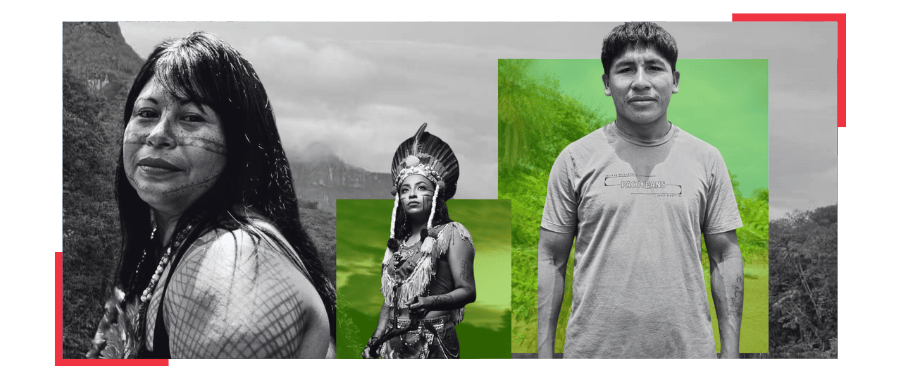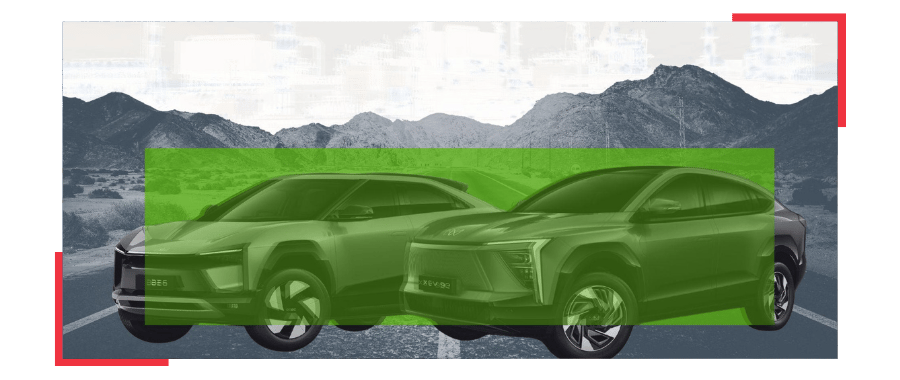- Uncovered
- Posts
- Climate summits come and go. Why does this one matter?
Climate summits come and go. Why does this one matter?
Plus: Character.AI responds to our investigation

“It is where we have our market, our pharmacy; it is our food source. That is what the forest, the Amazon, means to us.”
Hi there,
Rob here. I’m the environment editor at TBIJ. And I’m taking advantage of Franz being away to tell you about Cop In / Cop Out – our series of stories on key issues at the global climate summit in Brazil.
It’s the 30th iteration of the summit this year. Back in the spring, when I said I wanted to focus stories on the talks, an unnamed editor asked: “Cops come and go, why should anyone pay attention to this one?”
It was a fair challenge. Cops have long been criticised as talking shops that have been captured by petrostates and fossil fuel lobbyists. In the past, they’ve successfully stalled the talks and managed to block deals to rid the world of the most polluting fuels. Even senior UN staff who once oversaw the process reckoned it needed a revamp.
But this year felt different. Why? Because it’s in Brazil. The country is home to the largest part of the Amazon rainforest, which, along with its peoples, provide critical lines of defence against climate breakdown. The stakes there could hardly be higher. And Brazil is also known to have some of the world’s best climate negotiators.
(If you want to know more about Cop30 – and if it’ll change anything – read my explainer here).
This week we launched Cop In / Cop Out – so named because of the historic divide between the behind-closed-door negotiations and the rest of society, who watch on demanding accountability from outside the official venue.
That’s a gap the Brazilians want to bridge. And the Cop hosts want to make this the first in which the Indigenous people take the lead.
We often see Indigenous people at these summits. And when we started brainstorming for this series, Grace, our reporter and impact producer, said she wanted to know if, despite the dangers they face and numerous promises to support them, anything has actually changed.
How would we assess that in any measurable way? I asked. Maybe we interview 100 of them and see what they say, Grace replied – and that’s what she did.
We interviewed 100 Indigenous people from countries with the most tropical forest cover – mainly from Brazil, the Democratic Republic of Congo, Indonesia, Colombia, Peru and Venezuela – to find out about their living standards and the threats to their lives and lands.
Unfortunately, we heard how governments are trampling on their rights and their wellbeing is suffering.
Almost 60% said their situation has worsened in the past ten years, with many citing deteriorating access to food and healthcare. They identified specific threats to their livelihoods in the form of illegal logging, mining and the expansion of agribusiness.
Leo Morales from the Taurepang people, part of the Pemon Indigenous group in Venezuela, said deforestation was deeply affecting him. “It’s getting worse because the forests are further away,” he said. “The animals are further away. They’re moving further inland. The rivers have dried up, there are no more fish.”
But we also heard how Indigenous people’s relationship with the forest defies our understanding. We heard how it represents a supermarket, a pharmacy, a hardware store and a church.
Beyond this, the forest was part of them, they said. It’s their family, and its fate is inseparable from their own. Joseph Itwaonge from the DRC told us: “The forest is part of the soul of indigenous peoples. The identity of indigenous peoples has a real and living foundation and that is the forest. We feel safe because we are in the forest…We defend it because when we lose it, we lose part of the foundations of life, of identity.”
This week we also published a story about that longstanding sticking point in climate talks: money.
Recent Cop summits have been dominated by the amount of “climate finance” that rich countries should contribute to helping poorer nations deal with the crisis. But there are major questions around the quality of climate finance too, and what the term even means.
Our senior reporter Josephine Moulds dug into how British International Investment (BII) – a publicly owned overseas investment body – is spending taxpayers’ money as “climate aid”. It’s meant to help developing countries grappling with the climate catastrophe.
But some of the deals we found seem to be going somewhere quite different.
Among BII's investments we found a £200m investment in a massively profitable Indian company ultimately owned by one of the country's richest men. That money went to develop a line of luxury EVs, which are endorsed by a Bollywood actor who praised one model as "fantastic" when chauffeur-driven – hardly helping those most in need.
Oh, and they cost up to £26,000 – about 18 times the average annual salary in India.
We also found multi-million pound deals for telecoms companies that made massive shareholder payouts the same years they received BII money. BII said the funds were used to power telecoms towers that would otherwise run on diesel.
Graham Gordon at Christian Aid said it was a waste to use climate finance to marginally improve a big company's environmental impact, compared to shifting the sources of energy in a country.
We also found a £46m investment in a power company that generates electricity primarily by burning fossil fuels in seven countries across Africa. BII said that money was exclusively for solar projects, and qualifies as climate finance because it is helping the company’s strategy to increase renewable sources of electricity.
Yet more than 90% of the projects that this company is building right now will burn fossil fuels.
Sarah Champion, the MP and chair of parliament’s international development committee, told us: “It is absolutely critical that beyond the headline figures, the UK’s investments in climate finance add up to real change on the ground.”
You can read the full story on BII and its climate aid here.
There’s more coming from this project. Stay tuned for more revelations, including on how global banks appear to be undermining the green transition in countries hooked on fossil fuels.
This project was funded by our Big Give crowdfunding campaign – good reporting requires resources, and we couldn’t be more grateful to our amazing supporters for helping us get there. But the work won’t stop after Cop.
We’ll need to carry on holding polluters accountable and providing the public with trustworthy news. Will you help us keep going by joining us as a Bureau Insider today? Thanks to the Reva and David Logan Foundation, your membership contribution will be doubled at no extra cost to you, giving you a chance to double your impact:
Factchecked!
Each week we reveal a fascinating fact from our reporting…
Did you know?
Diethylene glycol, a type of industrial antifreeze toxic to humans, was found in alarmingly high qualities in children’s cough syrup made in India.
Find out more
Our analysis of data from India’s medicine regulators showed that at least 12 cases of substandard cough syrup have been flagged since 2018. The most recent was in May this year.
Over the past three years, the WHO has issued nine warnings about cough syrups contaminated with industrial chemicals. In five cases they were made by Indian manufacturers.
Read more here.
Character.AI to end chatbot conversations with children
In case you missed it, our story on Character.AI and the Jeffrey Epstein chatbot that could talk to children has prompted massive changes at the company. As of next month, children will no longer be able to talk with chatbots on the platform.
It comes after we found chatbots based on Epstein, Tommy Robinson, school shooters and gang leaders, all of which could be accessed by users that were under 18. Character.AI took down some of the chatbots after we flagged them, but some stayed up.
This new development, however, will mean children can’t engage in conversations with any characters on the platform, restricting their access to creating photos and videos.
The company is also going to roll out an age verification tool.
“We’re making these changes to our under-18 platform in light of the evolving landscape around AI and teens,” said Character.AI in a statement released on Wednesday. “We have seen recent news reports raising questions, and have received questions from regulators.”
The company added it was “deeply sorry that we have to eliminate a key feature of our product” but described the measures as “extraordinary steps for our company, and ones that, in many respects, are more conservative than our peers”.
What we’ve been reading
🔴 In other AI news, major platforms like ChatGPT, Grok and Gemini keep citing Russian propaganda when asked about Ukraine wired.com
🔴 After Trump signed an executive order, US veterans with a rare but deadly kind of breast cancer are being denied healthcare because they are men propublica.org
🔴 The details of Project Nimbus, a $1.2bn deal Amazon and Google signed with Israel to provide cloud computing and AI services, have finally been revealed 972mag.com
Thanks, Rob Rob Soutar |  |
ADVERTISEMENT
Tired of newsletters vanishing into Gmail’s promotion tab — or worse, being buried under ad spam?
Proton Mail keeps your subscriptions organized without tracking or filtering tricks. No hidden tabs. No data profiling. Just the content you signed up for, delivered where you can actually read it.
Built for privacy and clarity, Proton Mail is a better inbox for newsletter lovers and information seekers alike.




